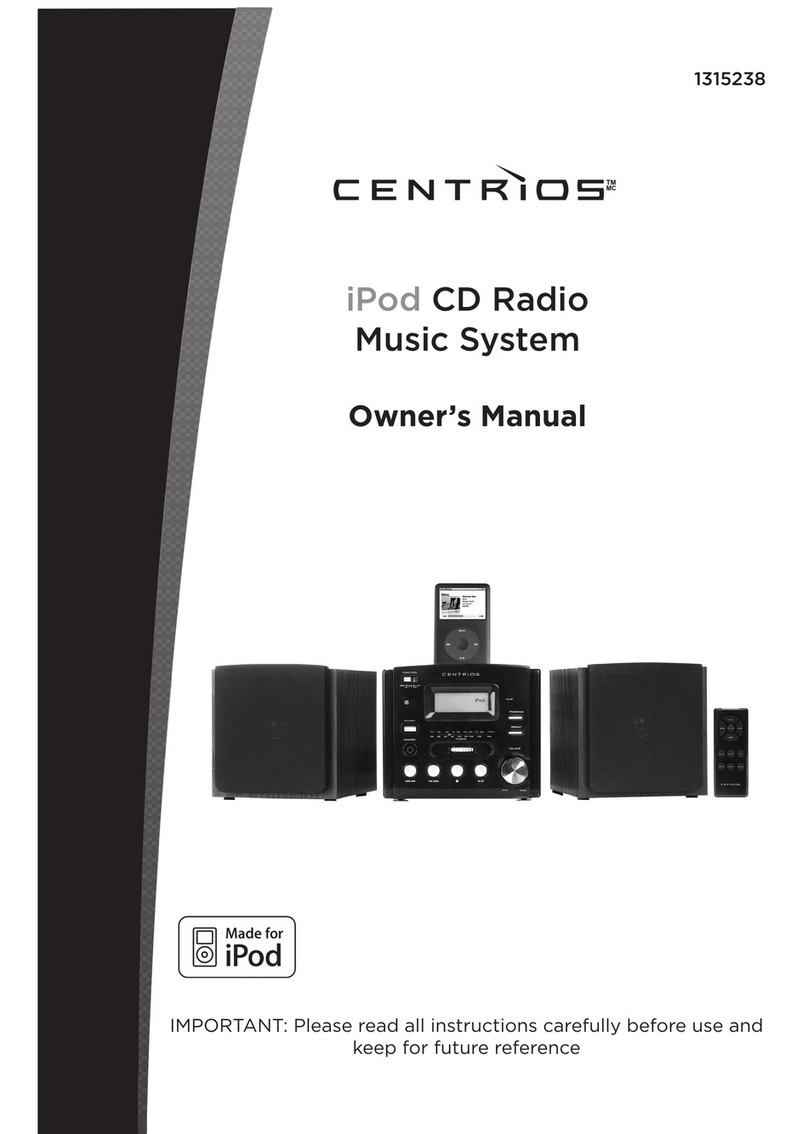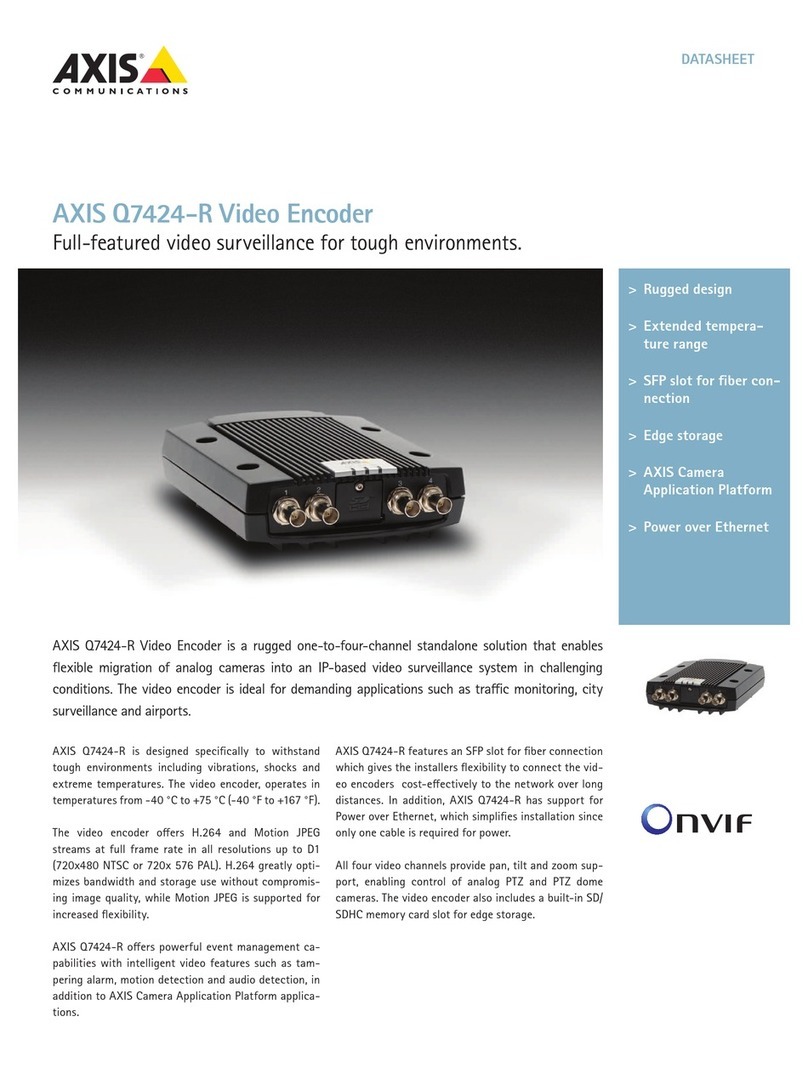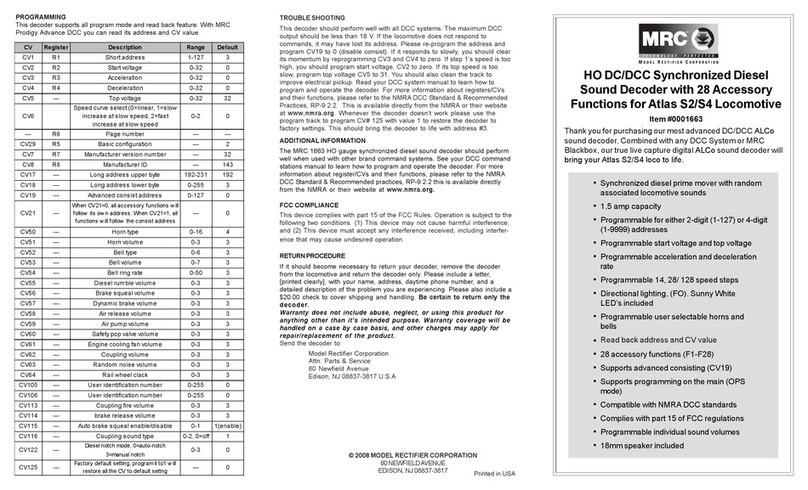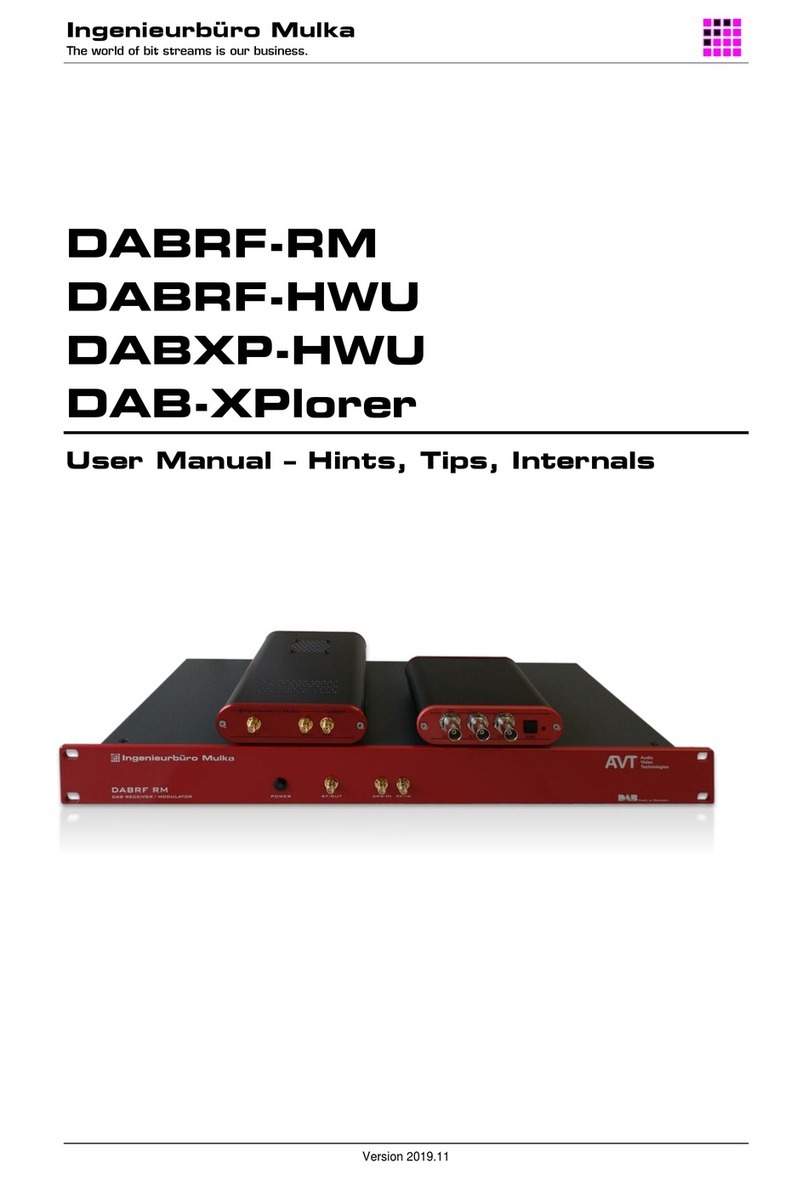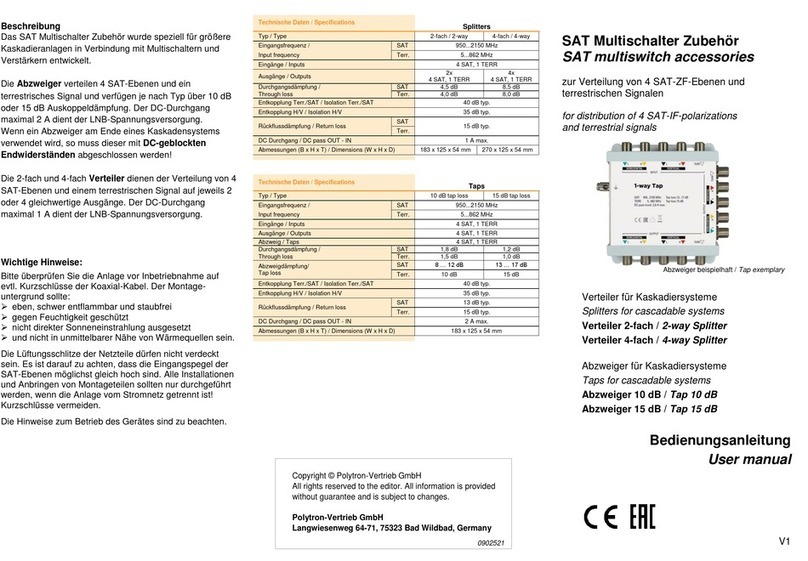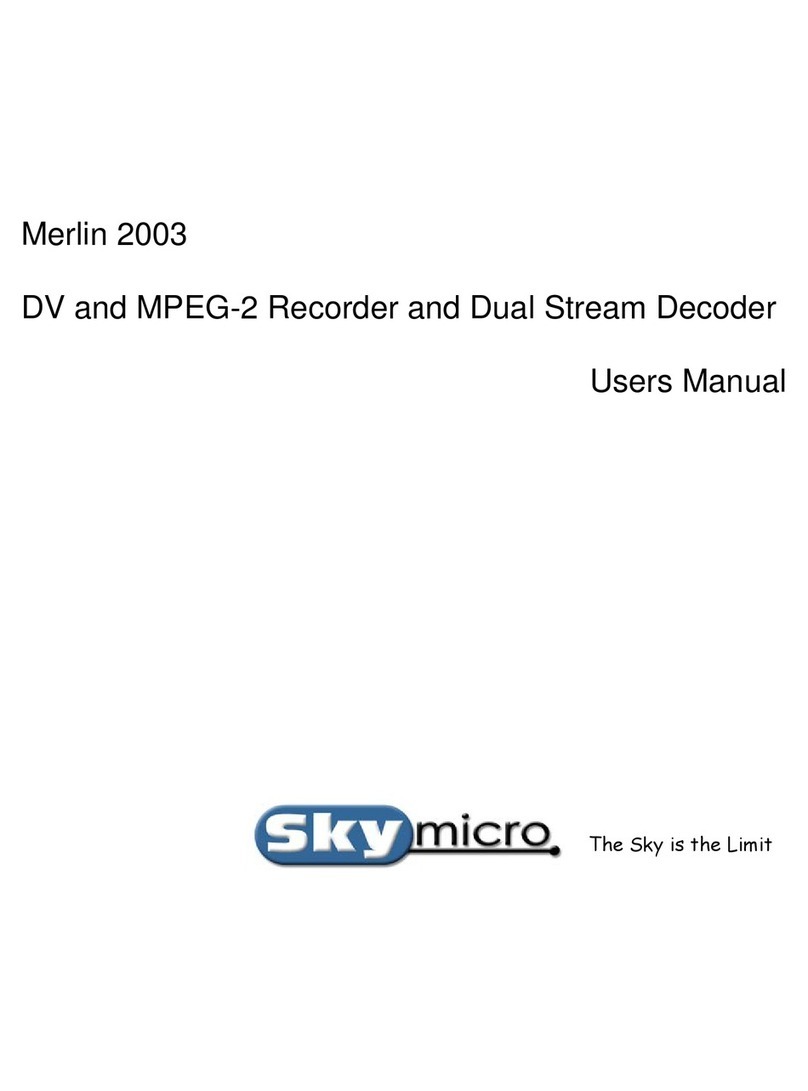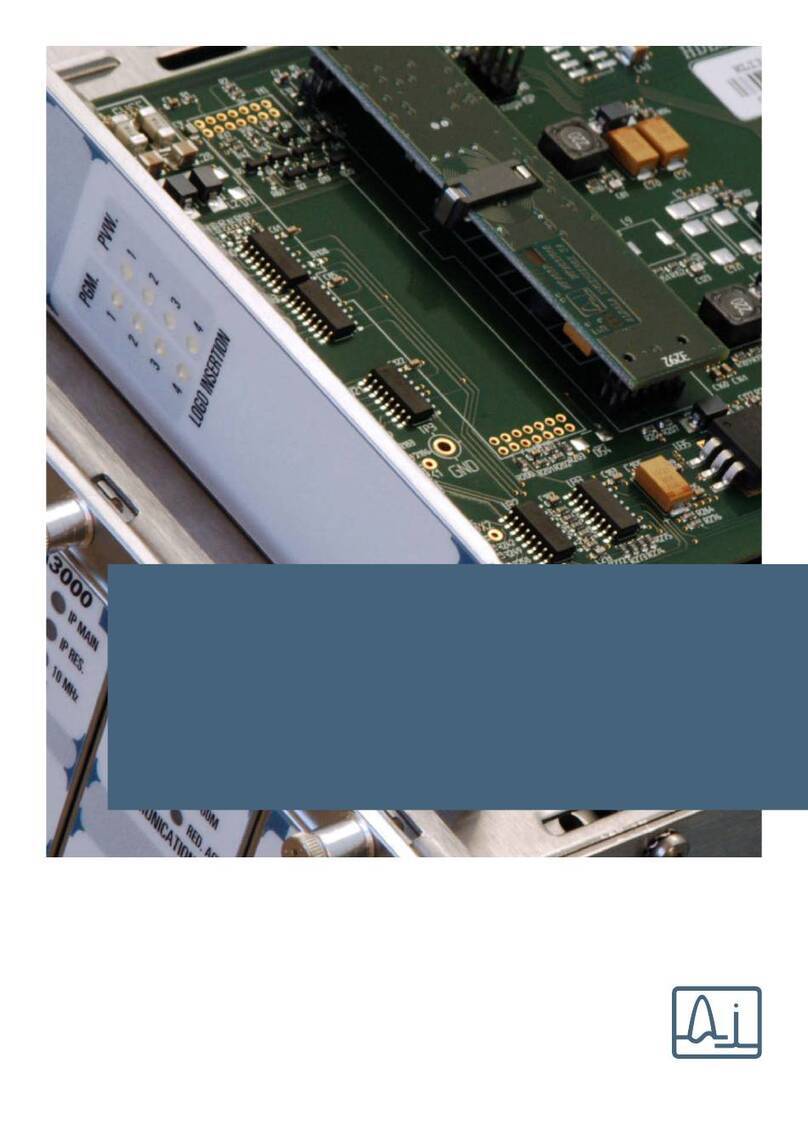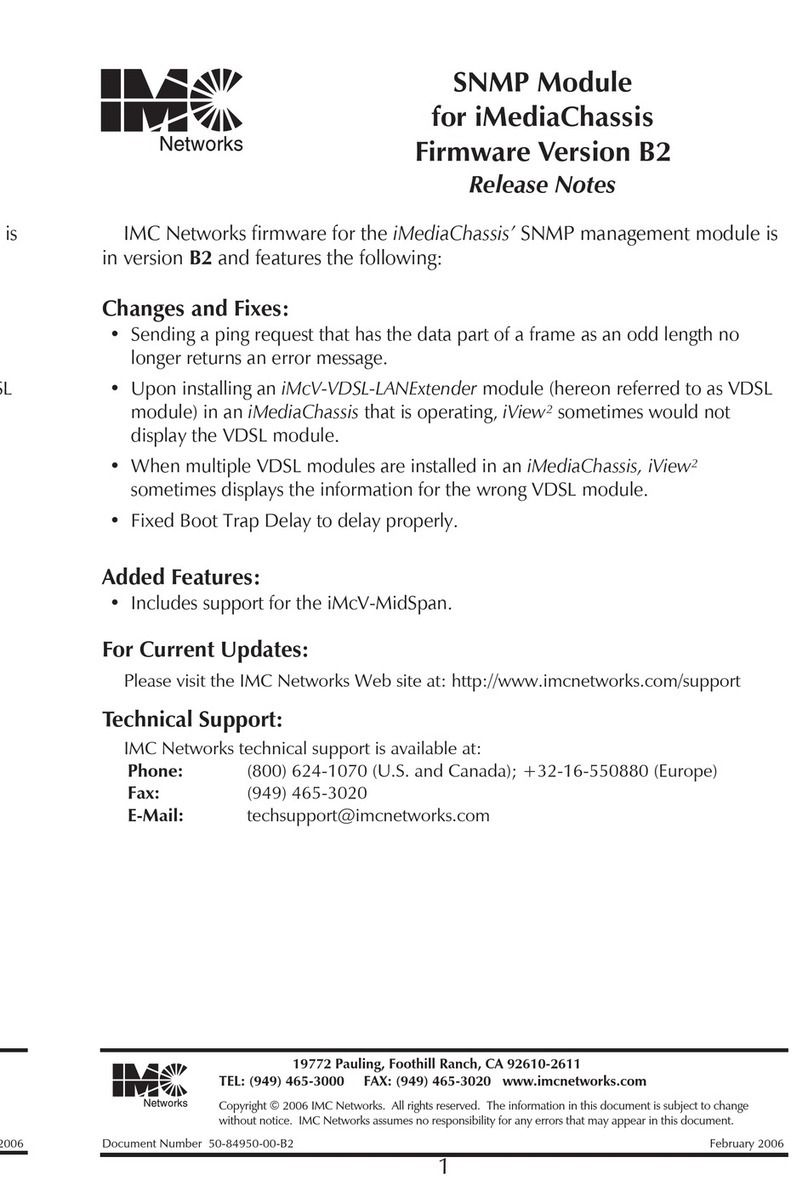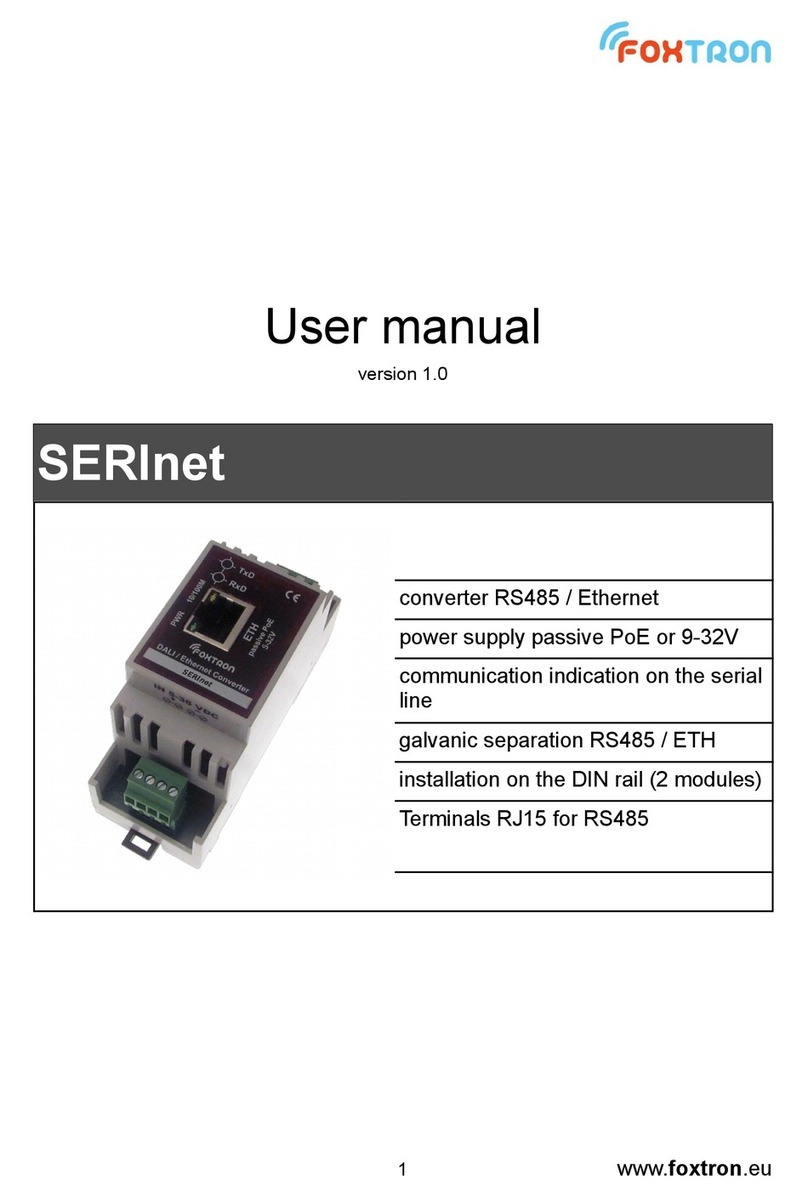STEINWAY LYNGDORF C User manual

MODEL C
INSTALLATION MANUAL
VERSION 2.0
[Skriv tekst]

TABLE OF CONTENTS
TABLE OF CONTENTS......................................................................................2
INTRODUCTION.................................................................................................3
COMPLIANCE ....................................................................................................3
INTRODUCTION TO THE MODEL C MUSIC SYSTEM.....................................4
UNPACKING MODEL C MUSIC SYSTEM .........................................................6
SYSTEM PLACEMENT IN THE ROOM..............................................................9
ASSEMBLY OF MODEL C MUSIC SYSTEM ...................................................10
USER INTERFACE MODEL C MUSIC SYSTEM..............................................16
MODEL C SOFTWARE PROGRAMMING........................................................17
MODEL C ROOMPERFECT™ CALIBRATION.................................................23
ROOMPERFECT™ TROUBLESHOOTING......................................................29
RESET, INTEGRATION, HANDING OVER TO OWNER..................................31
TRADEMARKS.................................................................................................33
SERVICE INFORMATION ................................................................................34
2

INTRODUCTION
Please read all material carefully prior to installation. If you need additional assistance, contact your
Steinway Lyngdorf representative or email service@steinwaylyngdorf.com.
COMPLIANCE
WEEE
The European Parliament and the Council of the European Union have issued the Waste Electrical
and Electronic Equipment Directive. The purpose of the Directive is to prevent waste of electrical and
electronic equipment and to promote reuse, recycling, and other forms of waste recovery. Steinway
Lyngdorf products and the accessories packed with them are subject to the WEEE Directive. Please
dispose of any waste materials in accordance with your local recycling regulations. Products and
equipment which must be collected for reuse, recycling, and other forms of recovery are marked with
the icon of the crossed-out waste receptacle.
FCC
Steinway Lyngdorf products and accessories comply with parts 15 and 68 of the FCC rules. Operation
is subject to the following two conditions: (1) this device may not cause harmful interference; and (2)
this device must accept any interference received, including any interference that may cause
undesired operation. Changes or modifications not expressly approved by the party responsible for
compliance could void the user’s authority to operate the equipment. Equipment marketed to a
consumer must be capable of complying with the necessary regulations in the configuration in which
the equipment is marketed.
3

INTRODUCTION TO THE MODEL C MUSIC SYSTEM
Safety Warnings
Physical Handling
The Model C components – especially the loudspeaker systems – are very heavy and large. They can
be difficult to handle. Follow all instructions for unpacking and installation. Use ergonomically correct
body positions. Be careful not to unbalance the large speaker systems during handling. Steinway
Lyngdorf cannot be held responsible for any physical damage which occurs during the installation
process.
Electrical Safety
The Model C system must be connected to the mains power system using the supplied power cables
only. The mains voltage has been factory set according to your territory (115 or 230 V). The voltage
setting can only be changed by an authorized technician. Use only mains power cables and power
plugs approved by Steinway Lyngdorf. Otherwise you may cause damage to the electronics and
infringe the warranty. Use only link cables – CAT-5E – approved by Steinway Lyngdorf. Using non-
approved cables, for instance with improper shielding, represents a major risk of violating EMC and
FCC rules for harmful noise radiation.
Accessories Included
In the system accessories box, located in the head unit crate, you will find a complete set of link
cables for use between head unit, speakers, and boundary woofers, a measurement microphone, a
microphone stand, and cable for calibration of the RoomPerfect™ system. For handling during
installation, several pairs of white gloves have been included in the accessory pack.
Preparing for Cabling
Steinway Lyngdorf Model C Music System has two pieces of 10 meters (33 feet) of CAT-5E link cable
and four pieces of 1.8 meter (6 feet) power cable included in the accessory pack.
Home Automation System Integration
Model C is compatible with home automation systems. The system accessory pack includes a remote
interface box for wireless transmission of the control signals. The remote interface box contains a RS-
232 interface with 9 pin Sub-D connector. Information about protocol etc. can be obtained from
Steinway Lyngdorf.
Checking Shipping Monitors on Arrival
To ensure proper transportation, all crates have Shockwatch and Tip’N’Tell monitors that will detect
any improper handling. On arrival, check these monitors. If indicators have been activated, always
accept shipment, note activation on bill of lading, and inspect the crates for potential damage inside.
4

5

UNPACKING MODEL C MUSIC SYSTEM
Pull out the Clip-Lok opening tool by using two fingers.
Place the tool behind the clip. Use your other hand to keep the clip in place when you unlock it.
Otherwise the clip may cause damage when it springs out of grip.
Unpacking and Handling Loudspeakers
The loudspeakers are very heavy. Therefore, a minimum of four people will be necessary to unpack
and install the system.
During moving and handling, do not tilt the boxes more than 90 degrees. It might be best to unpack
the system outside the building in which the installation is to be made.
The crates have been assembled using the Clip-Lok packaging system. The clips must be removed
with the tool supplied inside the corner of the boxes as illustrated.
WARNING: Be very careful when you unlock the clips. They are firmly fixed and may cause
damage when they spring open, unless you keep the clips in place with your free hand as
illustrated.
Once you have unclipped the box, remove the top. The speakers are bolted to two wooden plates
equipped with handles and lifting points. In the right channel speaker box, in a small compartment on
the speaker front facing wall, you will find two levers for later moving usage and an Unbraco fastener
for removing the transport fittings on top and bottom of the speakers.
After unclipping the top of the crate, remove the side wall as illustrated. The speakers are bolted to
two wooden plates equipped with handles and lifting points. Carefully slide out the speakers and
place them firmly on the ground. Using the supplied steel levers, you can now carry the loudspeaker.
6

The levers are located in a room on top of one of the crate walls. Place them in the transport fittings.
Four people will now be able to move the speaker securely into the installation site. Do not remove
the protective foil before final placement! Remove your watches, buckles, rings etc. before handling
the lacquered system components.
Removing Speaker Shipping Protection
The speaker stand is extremely heavy. To avoid potential damage when removing the transport
protection plate, place one of the foam protection plates from the shipping crate below the speaker
stand for secure support. Use the supplied Unbraco (Hex/Allen) key to release the bolts.
Using a Dolly for Moving the Speakers
Included in the packaging is a dolly cart with four multi-directional wheels. It is placed as a lid above
the amplifier module compartment in the right speaker crate. You can use the dolly for moving the
speakers into and inside of the place of installation. Unlock the Clip-Lok clips following the instructions
on page 8 and the dolly can be taken out of the crate.
Unpacking the Model C Head Unit
The head unit must be unpacked in the same way as the speakers. Remove the Clip-Lok clips from
the top of the crate and remove the lid. Afterwards, remove the clips on the walls. You can now easily
get access to the head unit and move it from the pallet.
The System Accessories Box
Inside the head unit crate is a compartment (as seen above on the photo) which contains the system
accessories carton with cables, Owner’s Box with Installation Manual and remote control, microphone
with tripod stand for RoomPerfect™ calibration and more.
7

Unpacking and Charging the Remote Control
The remote control is located inside the black leather Owner’s Box together with the Owner’s Manual.
The remote control is delivered with lithium-ion batteries only partially charged for safety reasons. The
batteries must be fully charged before use.
Place the remote control on the supplied docking station located in the System Accessories box and
connect the system to a wall outlet. The Steinway lyre logo on top of the remote control will blink as
long as charging is going on. Depending on the remaining power level in the batteries, a full charging
may require 3-4 hours.
Charge the remote control while you install the Model C Music System!
The System INSTALLATION FORM in the Manual must be SIGNED by the installer, or the factory
warranty will be void.
8

SYSTEM PLACEMENT IN THE ROOM
Guidelines for Room Placement
The head unit can be placed anywhere in the room, preferably within line of sight from the listening
position for optimum reception of remote control RF signals. You can place the speakers according to
the design of the room from a visual point of view, as long as you respect the basic stereo triangle
(60x60x60 degrees) by not allowing too much space between the speakers vs. the distance from the
speakers to the listening position. If a symmetrical position is impossible and the distance from each
speaker to the listening position is different, then this can be compensated digitally by adjusting the
delay in the Installation Menu (see Speaker Delay section). In an off-axis listening situation, you
should not exceed a 0 degree position towards the nearest speaker.
Regardless of speaker positioning, the RoomPerfect™ system will always ensure that the frequency
response in the listening position remains the same.
For perfect performance these recommendations must be followed:
•The speaker must be located at least 1 meter or 3.3 feet (50 cm or 1.65 feet from the rear
edge of the metal base) away from rear walls.
•The speaker must be located at least 1.5 meter or 4.8 feet away from side walls.
•The Boundary Woofers must be located in a corner and placed in a 45 degree angle. It is also
possible to place them against only the back wall with the back of the cabinet touching the
back wall.
•The speakers must be toed-in towards the primary listening position. For instance, if the
speakers are positioned in a 30 degree angle as seen from the listening position, then the
speakers should be toed-in 5-15 degrees depending on where the best sound is achieved.
•Both speakers should have the same amount of side reflections, i.e. symmetrical positions in
the room relative to adjacent walls.
•The Model C Music System has a time delay adjustment procedure to compensate for
unsymmetrical placements of the speakers compared to the listening position. See Speaker
Delay section.
9

ASSEMBLY OF MODEL C MUSIC SYSTEM
Removing the Bottom Plate
Remove the wooden bottom plate. Lay the speaker on its side, remember to place one of the foam
protection plates from the shipping crate below the speaker stand for secure support.
Spikes or Feet for Speakers and Head Unit
The speakers and the head unit are designed to stand on each four spikes or feet. The system
accessories box contains three mounting options.
a. 12 pieces of 28 mm high spikes for wooden floors or floors covered with ordinary carpet.
b. 12 pieces of 48 mm high spikes for floors covered by thick carpet.
c. 12 pieces of non-penetrating feet mainly for marble, granite or similar floor materials.
Spikes are the most stable option but might cause damage to the floor below; therefore, the use of
spikes will be each customer’s own responsibility. Steinway Lyngdorf cannot take any responsibility
for any damages caused by spikes. Choose the non-penetrable feet if there are any concerns about
potential harm to floors.
NOTE: The feet have rubber facing to protect the floor. Do not push or drag the speakers when they
are standing on the feet, as the rubber may be ripped off and damage may occur to the floor.
10

Installation of Amplifier Modules into the Speakers
The amplifier modules are located in sealed compartments in the loudspeaker crates as illustrated.
Remove the Clip-Lok clips with care as described on page 8 to avoid any damage when they are
unleashed. The amplifier modules must be installed in their compartments on the speaker stands and
wired prior to operation.
First, the electronics module must be inserted into the lacquered amplifier cabinet on the speaker
stand. Remove the rear panel as seen above. Then remove the two M6 bolts on top of the wooden
cabinet. Pull out the three speaker wires with plugs, as shown below.
The metal plugs might scratch the lacquered base! Be careful! Be sure to lead the cables for the
woofers through the bottom of the cabinet. Do not pull the cables through the black string!
11

Carefully slide the amplifier module inside (photo below). Then fasten the top of the module to the
cabinet with the two M6 bolts that you previously removed.
Cable Connections Between Amplifier Module and Loudspeaker
After assembly of the electronics box, the three speaker cables must be connected to the amplifier
module as follows:
1. Midrange/Tweeter: Silver plug. This must go into the LEFT silver plated Speakon terminal.
2. Woofer minus: This must go into the CENTER Speakon terminal.
3. Woofer plus: Black plug. This goes into the RIGHT black plated Speakon terminal. If the two outer
connections have been reversed, the speaker will not produce any bass and will sound very distorted.
Note that the cables for the woofers are led through the bottom of the cabinet.
12

Link Wiring of System
The Model C Music System is connected by a proprietary Steinway Lyngdorf link. The link cable will
carry both the digital audio signal and the control signals. It is very important that only CAT-5E cables
and RJ-45 connectors approved by Steinway Lyngdorf are being used. Poor quality cables and plugs
represent a major risk of noise and interference problems and may even cause violation of safety and
EMC regulations. The link cable from the head unit must be connected to the left RJ-45 port. If you
are forming a daisy-chain of speakers use the right RJ-45 port for output to the next speaker in line.
DIP Switchboard Addressing
The DIP switchboard in the upper left corner of the interface board must be encoded in order to make
it possible for the head unit to identify the speaker.
The DIP switchboard has eight switches. Use only DIP 1-4 for addressing. DIP switches 5-7 are not in
use. Uneven numbers refer to left channel speakers, even numbers to right channel speakers.
DIP SWITCH ADDRESSING (or ID) SYSTEM
Address 0 = 0000 = Speaker 1 (Left)
Address 1 = 1000 = Speaker 2 (Right)
Link Termination or Daisy-Chaining
DIP 8 must be adjusted for either termination or transmission. Switch DIP 8 to lower position if you
want to connect more speakers to the network. Switch to upper ON position if there are no further
speakers in the chain.
13

Connecting the Head Unit
The rear panel of the head unit has an array of digital connections on top and analog connections
placed below. The digital source input section offers three phono/RCA, one XLR and one optical
Toslink. The four RJ-45 link cable terminals to the right are for connecting up to eight pairs of active
speakers via the proprietary Steinway Lyngdorf Link System.
The analog section (as seen from the left) has an XLR microphone input for RoomPerfect™
calibration, three pairs of phono/RCA stereo inputs, and one stereo pair of balanced XLR terminals.
So in total five digital and four analog sources can be connected to the head unit. Each input to be
used must be activated by naming it in the Installation Menu.
Connecting the Power Cables
DO NOT power up Model C before you have read the power-up sequence instruction on the next
page!
When all signal connections have been properly made, you can connect the Model C to the mains
power. Both the head unit and the active speakers must be mains connected with the supplied high
quality cables.
The Model C head unit will switch automatically to your local voltage, whereas the speaker amplifier
modules have been factory set to either 115 or 230 V. This setting can only be changed by a certified
service technician.
14

Powering up the System
IMPORTANT!
The first power up sequence after final assembly of the system can only be performed in one way:
1. Speakers first.
2. Turn on head unit after speaker activation.
The head unit must be able to identify the speakers connected to it by the link network. This will
happen automatically when the head unit is activated. Therefore, the speakers must be powered up
first, so that the head unit immediately can track them. Consequently, if the head unit is powered up
first, there will be no active speakers to track and you will receive an error message (-E-) in the
volume display.
In case of failure and the head unit cannot identify any speakers, turn off all components and do the
power-up sequence again as described above.
The head unit will detect and adjust to voltage, whereas the speaker amp modules are factory set to
either 115 or 230 V.
15

USER INTERFACE MODEL C MUSIC SYSTEM
Model C Head Unit Display and User Interface
The volume control display indicates the level on a scale from 0.0 to 99.9. It also shows muting when
activated and CD track information briefly when you skip or search. When RoomPerfect™ is activated
the logo will be displayed. The remote control is an RF device and must be charged and installed prior
to operation. Voicings are six preset tone controls that can be toggled through using the dedicated
button.
Use the search wheel and the enter button to locate and select functions in the display. The menus
are self- explanatory. Please observe that in the Installation Manual, the ‘Enter’ button is referred to
as ‘Select.’ The display shows either a User Menu or an Installation Menu. The latter is only
accessible by entering a code as described in the next section.
16

MODEL C SOFTWARE PROGRAMMING
Finding the Installation Menu
The basic programming of the Model C Music System must be performed via the Installation Menu in
the head unit display. This Installation Menu is not accessible from the ordinary User Menu. To
activate it you must enter the User Menu and then input a certain code sequence using the buttons
alongside the display:
1. Press the MENU button.
2. Hold down INPUT (upper left button).
3. Press and release SKIP back, (second right button).
4. Press and release SKIP forward.
5. Release the INPUT button.
You will then gain access to the Installation Menu.
Remote Control Setup
a. Select REMOTE CONTROL SETUP in the Installation Menu.
b. Select ADD REMOTE.
c. On the remote control: Press and hold down the Voicing, Skip Left and Skip Right buttons
simultaneously until the MAC address appears in the head unit display.
d. Select YES to add the remote to the system. Factory setting is Auto channel detection. If you
experience repeated problems with interference or no connection, you can manually override the auto
selection and choose another channel.
17

Speaker Delay Settings
The Speaker Delay menu is used for adjusting delays in setups with more than two speakers or
setups where speakers are placed asymmetrically as seen from the listening position. In a standard
setup with two speakers placed symmetrically, there will be no need to change anything in the
Speaker Delay menu.
In the Speaker Delay menu, distances from all speakers to the listening position can be entered,
making it possible to delay the sound accordingly. The sound from all speakers will then arrive
simultaneously at the listening position.
The delay time must be adjusted individually for main and woofers.
a. Measure the distance between main and the listening position. Also measure between woofer and
listening position.
b. Input the measurements in centimeters into the Speaker Delay Menu as seen above.
18

c. When measurements for all speakers have been entered, select the Store setup menu item.
NOTE: The system can handle a maximum difference of 13 meters/43 feet between the nearest and
the furthermost speaker. If the distance exceeds 13 meters/43 feet, the system will display an error
message, the data will not be stored and the system does not exit from the Speaker Delay menu.
Input Naming
Up to nine external signal sources can be connected: five digital and four analog. Every input to be
used must be given a name, otherwise it will not appear in the User Menu.
a. Press ENTER for choice of entry.
b. Spin the search wheel to search for letters and numbers.
c. When the desired character is found, press SKIP FORWARD to store the character and move the
cursor to the next position.
d. You can move left and change a character using the SKIP BACK button.
e. Press ENTER when you have finished naming.
19

f. Use the search wheel to move to the next input and repeat the naming procedure.
g. When all necessary inputs have been named, use the Exit menu item to return to the Installation
menu.
No inputs will be available and displayed unless they have been named!
Input Sensitivity
This setting allows you to change sensitivity for each input source, so no change in volume level can
be heard when the customer switches between signal sources.
a. In the sub menu, press ENTER to choose the input for which you want to change sensitivity.
b. To adjust the sensitivity in decibel, spin the search wheel counterclockwise for decreasing and
clockwise for increasing sensitivity.
c. Press ENTER to store and exit each input.
d. Repeat the procedure for each activated input. Then select the Exit menu item to return to the
Installation menu.
20
Other manuals for C
1
Table of contents
